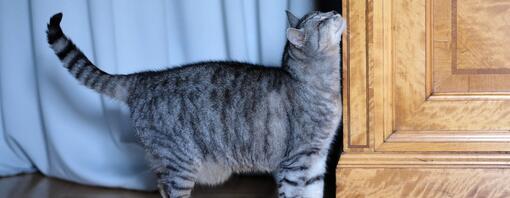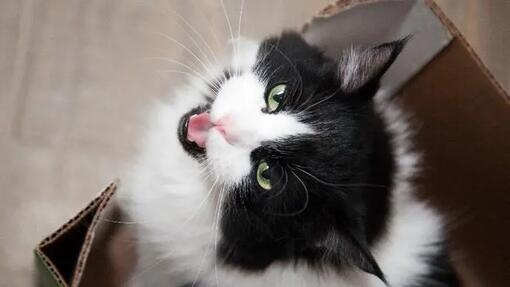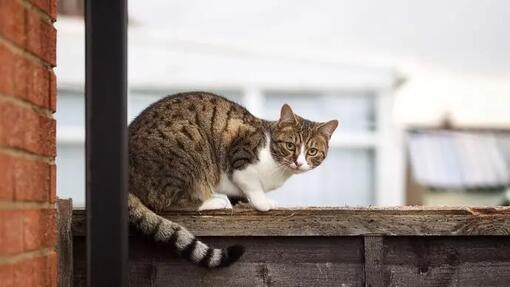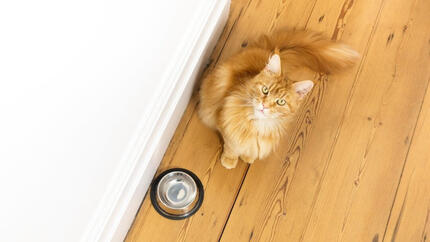
Just like most female mammals, cats experience monthly cycles. However, their ‘periods’ are quite different from the menstrual cycle in humans. In this guide, find out all you need to know about the cat heat cycle, including how often they go into heat and whether or not you should let your feline go through an initial cycle prior to spaying.
Do cats have periods?
In a sense, yes, cats do have menstrual periods. In felines it’s called ‘oestrus’, but many people just refer to it as being ‘in heat’.
Only unspayed female cats go through these cycles but rather than shedding the old womb lining like humans do, they reabsorb it, so bleeding is a very rare side effect.
When do cats go into heat?
An unspayed kitten will experience their first heat cycle around six months of age, but this can occur earlier or a little later depending on the cat. Because felines experience their first heat cycle so early in life, it’s important to get them spayed sooner rather than later in order to avoid unwanted pregnancies.
How often do cats go into heat?
Cats are ‘polyoestrous’ which means that they can go into heat multiple times a year during their fertile years. They can come into heat every two to three weeks, which is why so many people have the misconception that, like humans, cats are always fertile. Interestingly, the frequency of heat in cats is largely dictated by geographic and environmental factors such as the temperature and number of daylight hours. Cats living in warmer regions or that spend most of their time inside can experience heat cycles all year round, whereas the breeding season for felines in the Northern Hemisphere is typically from early winter to late autumn.
How long do heat cycles last in cats?
heat cycles tend to last several days in cats—the average is six days—however they can last up to two weeks. If your cat doesn’t mate during this time, they’ll go out of heat for a little while and then come back in. These cycles will continue to repeat until the cat either becomes pregnant or is spayed. If your cat mates, they’ll go out of oestrus within a day or two.
Signs of a heat cycle in cats
Your cat will display behavioural rather than physical signs when they’re in heat. Here’s what to look out for:
- Excessive vocalisation – many cats will ‘howl’ in order to call out to possible mating partners.
- They’ll be extra affectionate and will want more attention from you. They’ll probably rub themselves on you as well as on items around your house.
- Some cats may urinate more or might even mark objects. This is because their urine contains pheromones and hormones which provide signals to male cats that they’re ready to mate.
- If there are tomcats in the area, expect them to appear in your garden or outside your house; it’s likely they’ll mark there too.
- It’s unlikely, but you may spot a tiny amount of blood. If you notice a lot of blood, this is cause for concern and you should contact your vet immediately.
When can pregnancy occur during the heat cycle in cats?
Cats are induced ovulators, which means they need to mate to be able to release eggs from their ovaries. It can take three to four mating sessions within a 24-hour window for them to ovulate. During this period, they may mate with multiple tomcats and it’s possible for a single litter of kittens to have multiple fathers.
Should I let my cat go through a heat cycle before spaying?
No, this has no proven benefit for your cat. It’s a superstition that female cats that have a litter of kittens prior to spaying are more friendly, and simply isn’t true. Not neutering your cat puts them more at risk of getting cervical, mammary, or ovarian cancers and also contributes to cat overpopulation. Thanks for reading our guide to the heat cycle in cats! If you’re looking for more information about your cat’s behaviour, check out our guide on cat puberty next.
















